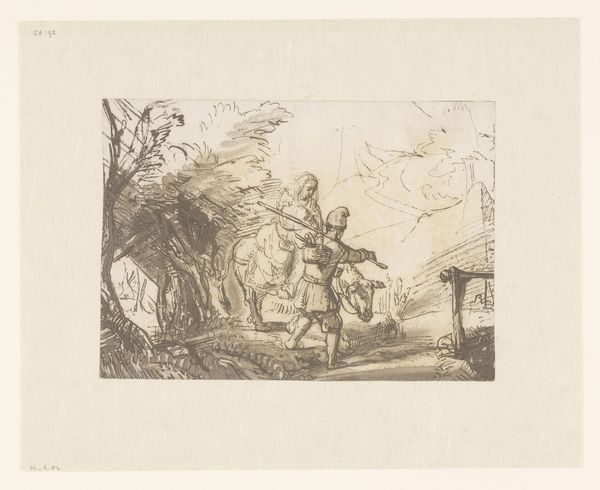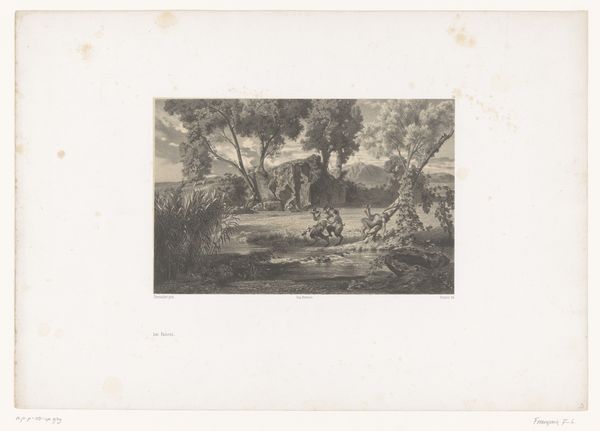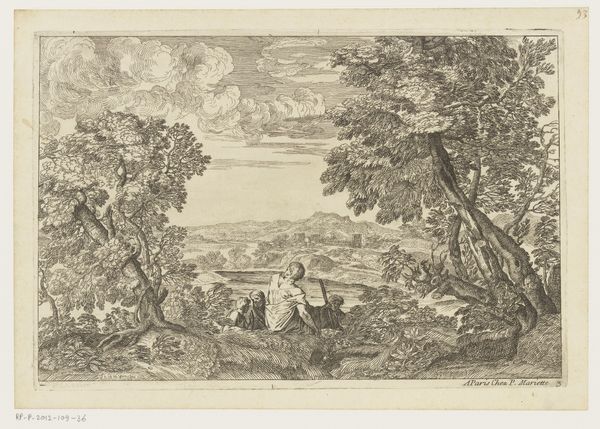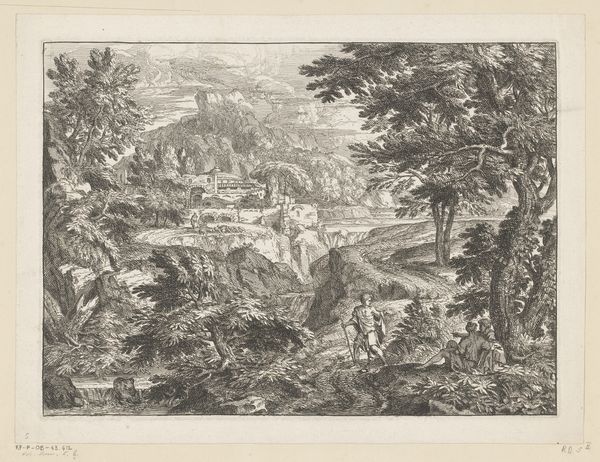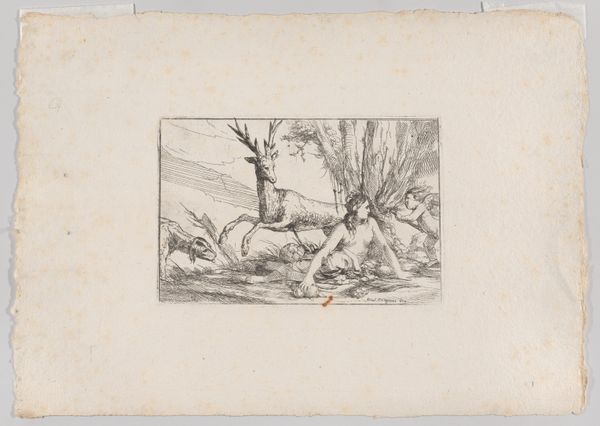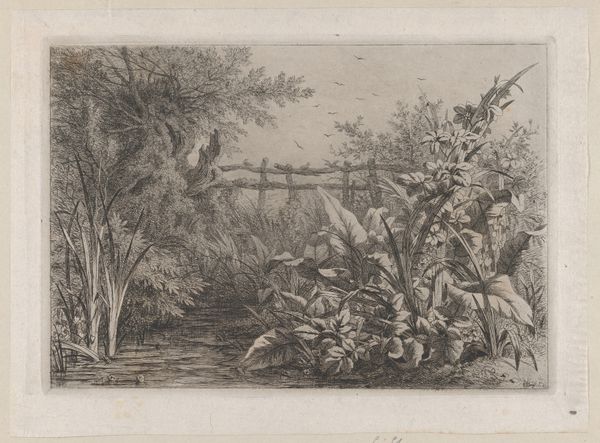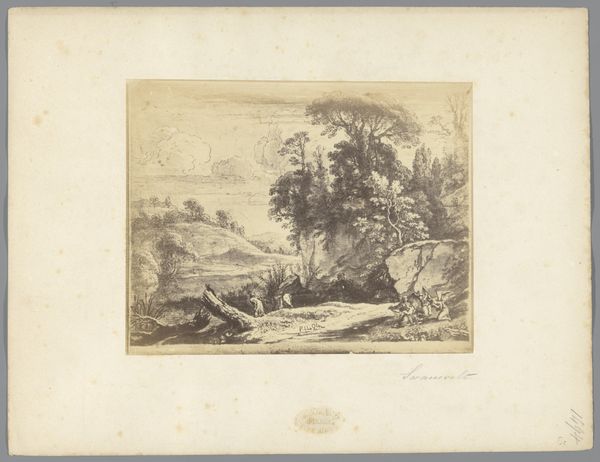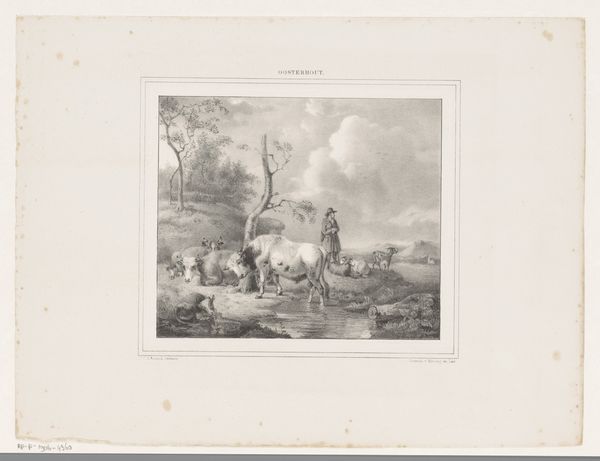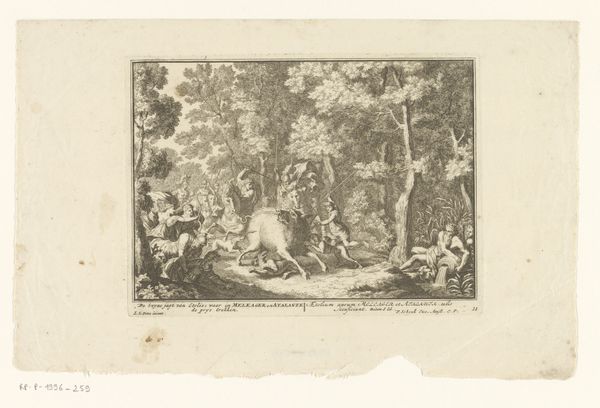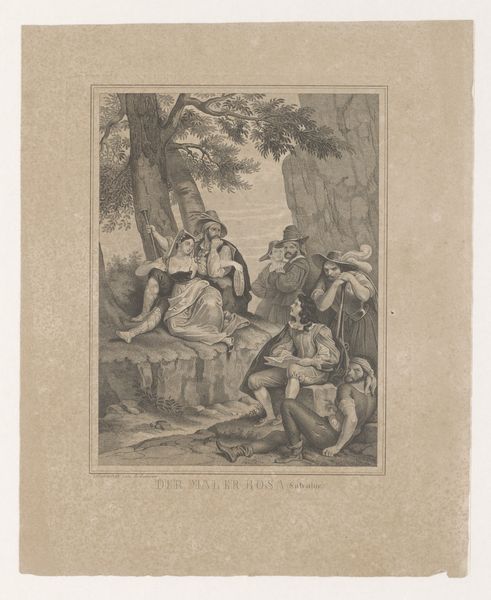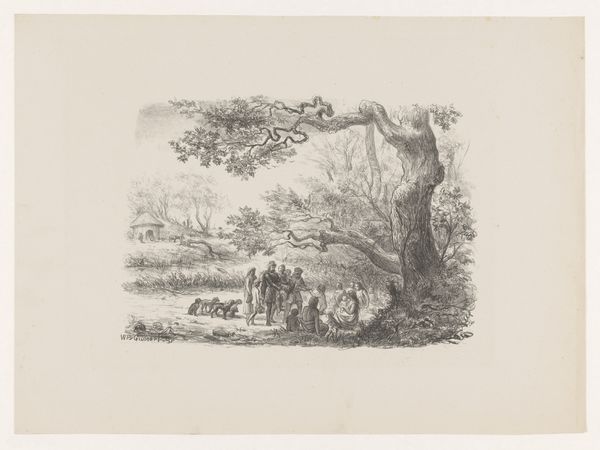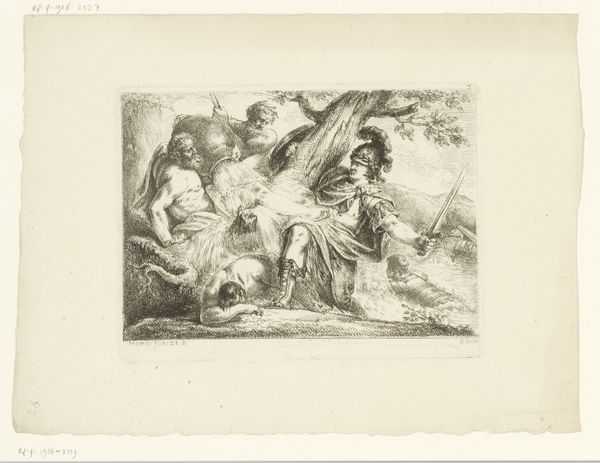
drawing, print, paper
#
drawing
# print
#
landscape
#
figuration
#
paper
Dimensions: height 146 mm, width 190 mm, height 242 mm, width 319 mm
Copyright: Rijks Museum: Open Domain
Editor: Here we have "Fotoreproductie van tekening van Peter Paul Rubens," a drawing reproduced as a print, dating from between 1851 and 1878. The scene has this kind of dreamy, idyllic quality... with the figures almost floating within the landscape. What’s your take on this work? Curator: The dreaminess you mention is key. By the mid-19th century, Rubens occupied a mythic space within European art academies. Reproductions like these, circulated as prints, solidified his style as the standard of idealized form and composition, deeply influencing the contemporary artistic consciousness. Note how it uses the theme of figuration with elements of a landscape. Editor: So, this reproduction almost becomes a tool, setting an agenda for the art of its time? Curator: Exactly! And consider the setting: the figures within a pastoral scene. By the 19th century, such imagery often functioned as a nostalgic retreat from industrializing society. Rubens, through these reproductions, offered a visual vocabulary to express this yearning for an imagined past. How do you see the interaction between the figures enhancing this effect? Editor: Well, you have these cupids on the left, then this maternal figure. It's not chaotic, though, it looks very calm. It creates a real sense of harmony. Curator: Precisely. This curated harmony reinforced conservative social ideals concerning family and leisure which permeated during the Victorian era. Art became a visual validation for maintaining certain social hierarchies. Editor: I hadn't considered how powerful a role reproductions could play, not just as copies, but as active participants in shaping taste and social values. Thank you! Curator: Indeed. Examining art within its socio-political context reveals its complex and lasting impact. It’s not simply about aesthetic beauty.
Comments
No comments
Be the first to comment and join the conversation on the ultimate creative platform.
